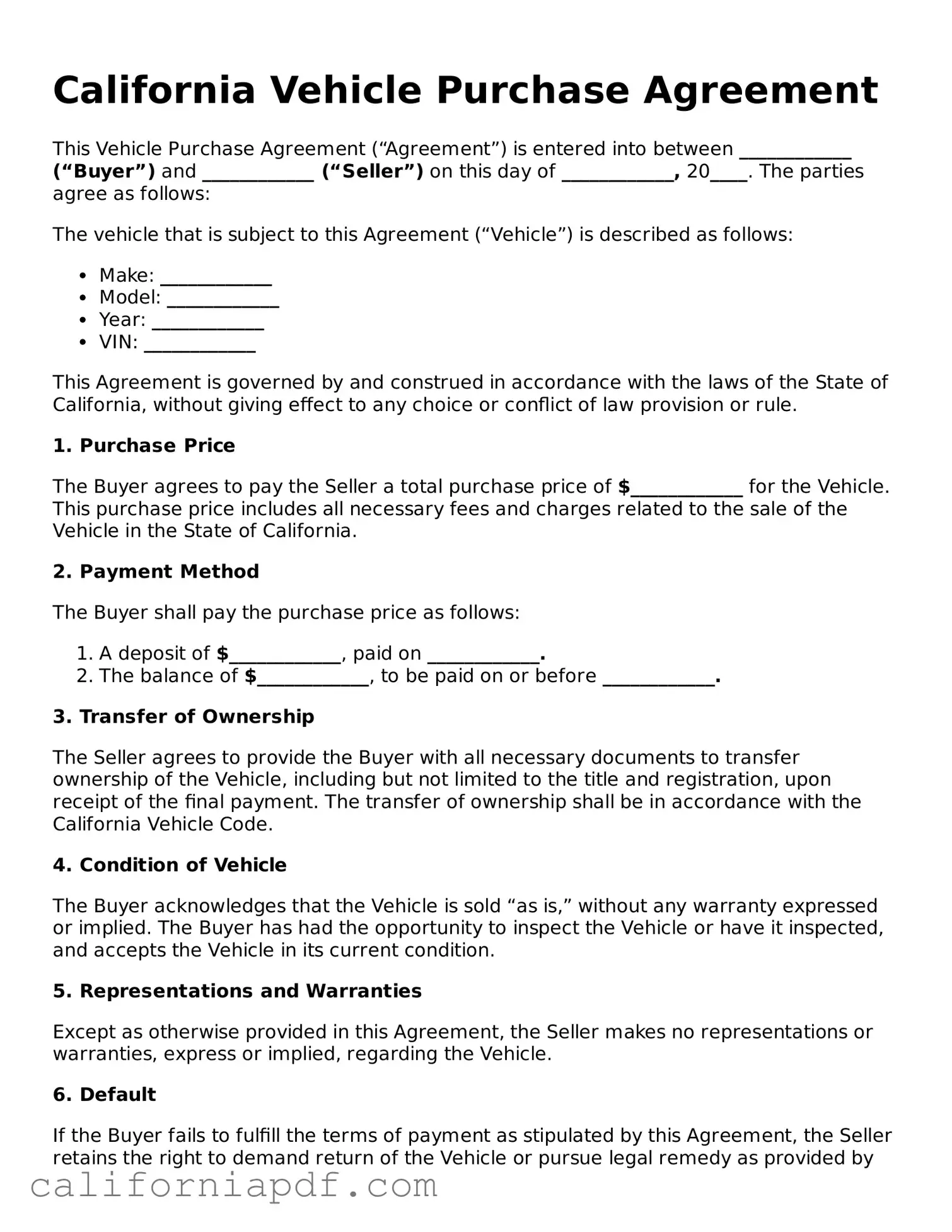California Vehicle Purchase Agreement
This Vehicle Purchase Agreement (“Agreement”) is entered into between ____________ (“Buyer”) and ____________ (“Seller”) on this day of ____________, 20____. The parties agree as follows:
The vehicle that is subject to this Agreement (“Vehicle”) is described as follows:
- Make: ____________
- Model: ____________
- Year: ____________
- VIN: ____________
This Agreement is governed by and construed in accordance with the laws of the State of California, without giving effect to any choice or conflict of law provision or rule.
1. Purchase Price
The Buyer agrees to pay the Seller a total purchase price of $____________ for the Vehicle. This purchase price includes all necessary fees and charges related to the sale of the Vehicle in the State of California.
2. Payment Method
The Buyer shall pay the purchase price as follows:
- A deposit of $____________, paid on ____________.
- The balance of $____________, to be paid on or before ____________.
3. Transfer of Ownership
The Seller agrees to provide the Buyer with all necessary documents to transfer ownership of the Vehicle, including but not limited to the title and registration, upon receipt of the final payment. The transfer of ownership shall be in accordance with the California Vehicle Code.
4. Condition of Vehicle
The Buyer acknowledges that the Vehicle is sold “as is,” without any warranty expressed or implied. The Buyer has had the opportunity to inspect the Vehicle or have it inspected, and accepts the Vehicle in its current condition.
5. Representations and Warranties
Except as otherwise provided in this Agreement, the Seller makes no representations or warranties, express or implied, regarding the Vehicle.
6. Default
If the Buyer fails to fulfill the terms of payment as stipulated by this Agreement, the Seller retains the right to demand return of the Vehicle or pursue legal remedy as provided by California law.
7. Governing Law and Dispute Resolution
This Agreement shall be governed by the laws of the State of California. Any disputes arising from this Agreement shall be resolved through arbitration in accordance with the California Code of Civil Procedure.
8. Entire Agreement
This Agreement constitutes the entire agreement between the Buyer and Seller regarding the sale of the Vehicle and supersedes all prior agreements, understandings, representations, or warranties, either written or oral.
Both Buyer and Seller hereby agree to the terms and conditions set forth in this California Vehicle Purchase Agreement. Signatures of both parties on this document indicate agreement and understanding.
Buyer's Signature: ____________ Date: ____________
Seller's Signature: ____________ Date: ____________
